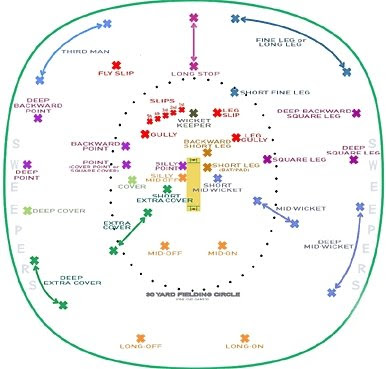Thursday, October 9, 2008
Tuesday, July 22, 2008
Monday, June 2, 2008
IPL Team Logo
Rajasthan Royals

Chennai Super Kings

Kings XI Punjab

Delhi Daredevils

Mumbai Indians

Kolkata Knight Riders

Royal Challengers Bangalore

Deccan Chargers Hyderabad

Bollywood Stars at IPL
IPL Cheerleaders
DC Cheerleaders



RCB Cheerleaders


Kolkata Knight Riders Cheerleaders

Kings XI Punjab Cheerleaders

Rajasthan Royal Cheerleaders



Friday, February 22, 2008
New Rules introduced in one day international(50-50 overs) Cricket
This rule states that following a no-ball only because of overstepping, the next ball shall be given a Free Hit. For this ball,the batsman is not given out by any way in the cricket rules apart from being run-out.
Rule 2: Change of the ball at the start of 35th over of each innings
There will be a mandatory replacement of ball after the end of 34th over of each innings.
Rule 3: Pitch
All matches shall be played on natural turf pitches. The use of PVA and other adhesives in the preparation of pitches is not permitted.
Rule 4: Slow over rate
Due to slow over rate by any team, the whole team will only face penalty on there match fee. There will not be any sort of reduction in number of overs and runs to be scored.
Rule 5: Points Distribution
In a competition with three or four Members with ODI status, the points system will be as follows:
Win, with bonus point - 5
The team that achieves a run rate of 1.25 times that of the opposition shall be awarded one bonus point.
In the event of teams finishing on equal points, the right to play in the final match or series will be determined as follows:
• The team with the most number of wins
• If still equal, the team with the most number of wins over the other team(s) who are equal on points and have the same number of wins
• If still equal, the team with the highest number of bonus points
• If still equal, the team with the highest net run rate
Rule 6: Power Plays
There are 3 blocks of Power Plays in 50-50 over match. A total of 20 overs are allocated for this.
First block of Power Play(PP) is fixed for first 10 overs. During this PP only 2 fielders are allowed outside the ring.
Second and Third block of PP are each of 5 overs and its the responsibility of the fielding captain to use them when he wants but before the start of 41st over. If both these block of PP are not used till 41th over then umpire assign the 2nd block of PP to from 41st to 45th overs and 3rd block of PP from 46th to 50th overs. Also the fielding team can place 3 fielders outside the ring in any one of the 2 Power Play.
Rule 7: Fielding restriction
At the instant of delivery, there may not be more than 5 fieldsmen on the leg side.
During First PP only 2 fieldsmen are allowed outside the ring.
For 2nd or 3rd PP 3 fieldsmen are allowed outside the ring but not in both of them. The other one has the same restriction as 1st PP.
New Rules introduced in Twenty-20 Cricket
Rule 2: Power to the umpires
In this rule umpire can award 5 runs to one of the teams playing if he feel that the other team needlessly wasting time.
Rule 3: Twenty overs within 75 minutes
In Twenty 20 cricket each team has to complete there 20 overs in 75 minutes, failing so will impose strict penalties. As per this rule a bonus of 6 runs is awarded to the batting team in case the bowling team does not begin their 20th over before 75 minutes.
Rule 4: Bowling restrictions
In Twenty 20 cricket a bowler can only bowl a maximum of 4 overs in a match.
Rule 5: Power play
In Twenty 20 cricket first 6 overs comes under power play which imposes restriction on fielding. Only 2 fielders are allowed outside the ring during the power play.
Rule 6: Fielding restrictions
Twenty 20 cricket rules state that only 5 fielders can field on the leg side at any point of time. The other fielding restriction rule of Twenty 20 cricket states that a maximum of two fielders can be outside the ring in the first 6 overs and a maximum of five fielders can be outside the ring for the remaining 14 overs.
Rule 7: Bowl-outs
This special Twenty 20 cricket rule applies to Twenty 20 matches that end in a tie. According to this Twenty 20 cricket rule, five bowlers from either team are allowed to bowl at the wicket with no batsman at the crease. The team which hits the wickets maximum will win the match. In case both teams equals the hit in first case, they are given another round of 5 balls with those bowlers and this carries on untill one of them wins.
Thursday, February 7, 2008
Duckworth/Lewis Method of Re-calculating the Target Score in an Interrupted Match.
The team batting first are referred to as ‘Team 1’ and the team batting second are referred to as ‘Team 2’.
The terms ‘target’ and ‘revised target’ are reserved exclusively for the minimum score Team 2 need to win.
N is the number of overs per innings for the match as decided at the moment of delivery of the first ball of the match.
S is Team 1’s total score.
R1 is the resource percentage (relative to a full 50-over innings) available to Team 1.
R2 is the resource percentage (relative to a full 50-over innings) available to Team 2.
T is Team 2’s target score.
Reading the table:
The single table applies to all lengths of one-day matches from 50 overs-per-side . Thus when there are 50 overs still to be received and no wickets have been lost, the resource percentage available is 100%. A 40-over innings starts with a resource percentage of 89.3% relative to a 50 over innings. An innings shortened to 25-overs before it starts commences with a resource percentage of 66.5% relative to 50-over innings.
You can see the table by clicking the link below :
Suppose now that there is an interruption in play and 10 overs are lost from the innings. When play can resume there are only 20 overs left but there are still, of course, 2 wickets down, and the table now tells us that the resource percentage remaining is 52.4%. Thus the shortening of the innings has caused the team to lose a resource percentage of 67.3 - 52.4 = 14.9%.
Having started with a resource percentage of 100% and lost 14.9%, then if they complete their innings with no further loss of overs, they will have had a resource percentage available for their innings of 100 - 14.9 = 85.1%.
Example 1 (Suspension during Team 1’s innings)
there is a suspension in play. It is decided that 20 overs of the match should be
lost, 10 of these by each team. Team 1 resumes to reach a final total of 180 in its
revised allocation of 40 overs.
Number of overs per innings at the start of match, N = 50
Resource percentage available to Team 1 at start of innings = 100%
Resource percentage lost due to suspension = 62.3 – 50.6 = 11.7%
Resource percentage available to Team 1, R1 = 100 – 11.7 = 88.3%
Number of overs available to Team 2 at the start of its innings = 40
Resource percentage available (40 overs left, 0 wkt lost), R2 = 90.3%
R2 is greater than R1, i.e. Team 2 has more resource available than had Team 1,
so its target should be increased. S = 180
Team 2’s revised target is T = S + G50 x (R2 – R1)/100 + 1 = 180 + 225 x
(90.3 – 88.3)/100 + 1 = 185 (rounded down).
Example 2 (delay to start of Team 2’s innings)
In an English National League match (45 overs per innings), Team 1 scores 212
in its allocated 45 overs. Rain then causes Team 2’s response to be delayed and
it is decided that it should be shortened to 35 overs.
Number of overs at start of match, N = 45.
0 wkt lost) = 95.0%.
The innings was not interrupted, so R1 = 95.0%
Number of overs available to Team 2 at start of its innings = 35
Resource percentage available to Team 2 at start of innings (35 overs left, 0 wkt
lost) R2 = 82.7%.
R2 is less than R1; S = 212
Team 2’s revised target is T
= S x R2/R1 + 1 = 212 x 82.7/95.0 + 1 = 185 (rounded down).
Example 3 (suspension during Team 2’s innings)
In an One Day International match (50 overs per innings), Team 1 has scored
250 from its allocation of 50 overs in an uninterrupted innings. Team 2 has
received 12 overs and has scored 40/1. Then play is suspended and 10 overs
are lost.
Number of overs at start of match, N = 50.
Resource percentage available to Team 2 at start of innings = 100% .
Resource percentage lost due to suspension = 82.0 – 68.8 = 13.2% .
Resource percentage available to Team 2, R2 = 100 – 13.2 = 86.8% .
R2 is less than R1; S = 250.
Team 2’s revised target is
T = S x R2/R1 + 1 = 250 x 86.8/100 + 1 = 218 , and it needs a further 178 runs
from 28 overs.
Monday, January 7, 2008
Should Indian Team call off the Australia tour?
The question that is bothering the Indian Team and BCCI is weather to call off the Australian tour or not. After becoming the victims of such a poor umpiring and then the charges of racial abuse, will Indian Team be able to continue playing upcoming matches under such conditions.
BCCI risk paying a 2.3 million dollar fine for suspending its cricket tour of Australia,and this has probably led the board to order the Indian team to remain in Sydney, rather that travel to Canberra as scheduled. Under ICC rules, member countries are obliged to fulfil their tour contracts except when the security of the players is at risk or the touring team's government orders that the tour should not proceed.
The Indian players were incensed by the poor standard of umpiring, most of which favoured the Austrailians, and Indian captain Anil Kumble revived echoes of the Bodyline controversy when he accused the Australians of not playing in the spirit of the game. From the first Day of the match umpiring was in the favour of Australian Team and then the Australian Players lining up as witnesses against Harbhajan Singh for Racial Abuse. It seems that everything was against Indian Team in second test match.
ICC should take some action on the incidents that took place during second test insted of imposing charges on Indian Players. If these conditons remains during the third test also then i am highly in favour of calling out the tour by BCCI. Insted this decision should be made by ICC because this is not cricket and this is against the spirit of the game.

























